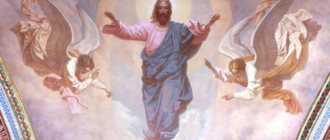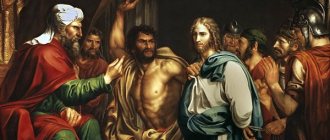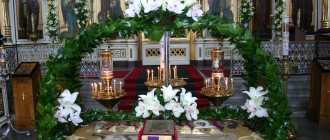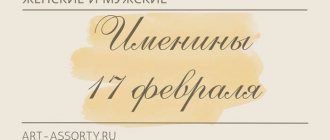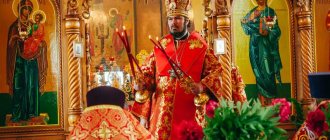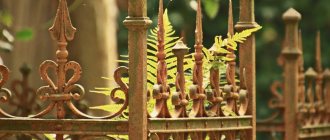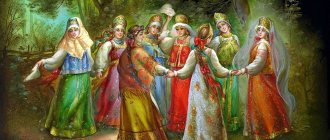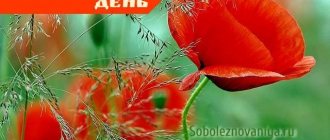The Ascension of the Lord is a moving twelve-day holiday, celebrated on the fortieth day after Easter, that is, it always occurs on Thursday of the sixth week after Easter. On this day, we remember how, after the resurrection, Jesus Christ led his disciples to the Mount of Olives and ascended into heaven, and also made a promise about His second coming. This holiday, established in the time of the apostles, is remembered daily by all Orthodox Christians by reading the Creed.
The meaning of the holiday
The name of the holiday reflects the essence of the event - this is the Ascension of the Lord Jesus Christ to Heaven, the completion of His earthly ministry.
The number 40 is not random, but meaningful. Throughout Sacred history, this was the time of the end of great feats. According to the Law of Moses, on the 40th day, babies had to be brought by their parents to the temple, to the Lord.
It, like Easter, has a moving date. The celebration is dedicated to the ascension of Jesus Christ to Heaven after the completion of his earthly ministry. People also consider this date to be the beginning of summer and the end of spring.
This year all Orthodox Christians will again celebrate the Ascension of the Lord. What date will the celebration take place? In 2022, Ascension falls on May 17th. In 2022, Ascension falls on June 6
His resurrection indicated that his earthly life had come to an end. But for another 40 days he continued to communicate with his students, blessed them for good deeds, and gave them advice.
That is, in fact, on the fortieth day after the death of Jesus Christ, we remember him and the tragic events of the crucifixion. On this day, Christ gathered the apostles on Mount Olivet, blessed them and ascended to heaven.
Interpretations of the Holy Fathers
Sermons for the holiday were written by dozens of saints. Their main theme is the deification of man, his union with Christ.
Heaven and earth
St. John Chrysostom says that the Ascension of the Lord is like the crown of our salvation. If, after the fall of Adam, man was deprived of Heaven, now by Christ he is introduced into his heavenly Fatherland. And even during earthly life, a believer - “until the end of the age” under the protection of Christ:
“Even when the Son of God came to earth, having assumed human nature according to the economy, He did not deprive Heaven of His greatness. And now, having ascended in the flesh, He did not leave the earth without His rule.”
White robes of the holiday
St. Gregory Dvoeslov draws attention to the fact that it was at the Ascension that the Angels appeared, dressed in white robes, while at the Birth of the Savior the Word of God tells us nothing about this:
“The angels during the Ascension of the Lord were dressed in white clothes as a sign that the Ascension of the Lord in the flesh constituted the greatest triumph for them, because white clothes are a sign of joy and heartfelt joy. And at His Nativity they did not appear in white robes because during His carnal birth His Divinity was humiliated, while at the Ascension His humanity was deified.”
Open skies
St. Demetrius of Rostov, speaking about the meaning of the holiday for Christians, exclaims:
sss]“Oh, how joyful is this reason for the Ascension of the Lord! He ascended into heaven in order to open wide the doors of heaven for us, to set them aside for our unhindered ascent to heaven. Open to us, O Lord, open the doors of Your mercy.” [/sss]
“The soul is a sacrifice to Him”
But a person’s salvation cannot be achieved without his will. St. John Chrysostom writes:
«
The Lord of all, Christ dwells in heaven and rules the world, and the sacrifice to Him is the soul turning its eyes to Him, and one food for Him is the salvation of believers.”
St. Ephraim the Syrian calls:
“Sober up a little, man, come to your senses and, like a reasonable person, know that the Almighty God came from heaven for you to lift you from earth to heaven.”
The joy of salvation merges in this holiday with anxiety about the weakness of us who live earthly life, called by it to testify about God. Will we be able to do it? But let us remember the words of the Apostle Paul:
“I can do all things through Jesus Christ who strengthens me” (Phil. 4:13).
Then the joy with which the disciples departed from Olivet will become clear, and we, like them, will be able to at least try to live in such a way as to ascend to Heaven after the Teacher.
Natalia Sazonova
History of the Ascension of Jesus Christ
In the New Testament in the Acts of the Apostles (chapter 1:9-11) these events are described as follows:
“He was lifted up before their eyes, and a cloud took Him out of their sight. And when they looked at the sky, during His ascension, suddenly two men in white clothes appeared to them and said: Men of Galilee! Why are you standing and looking at the sky? This Jesus, who has ascended from you into heaven, will come in the same way as you saw Him ascending into heaven.”
The story of the Ascension of the Lord is described in the Acts of the Holy Apostles, in the Gospel of Luke, at the end of the Gospel of Mark.
After the miracle of the Ascension, his disciples returned to Jerusalem happy and joyful, since this event is not the day of the loss of the Most High, but is a symbol of the transformation and ascension of all people into His Kingdom.
Jesus took his place at the right hand of God the Father and has been a constant presence on Earth ever since.
Ten days after the Ascension, the Holy Spirit descended to the apostles and gave them the strength to preach the Christian faith among people. Pentecost is celebrated on this day (50th day after Great Easter).
Ascension of the Lord. Divine service
On the eve of the Ascension, Easter is celebrated. On Wednesday evening the festive service begins, its structure is similar to other twelve holidays. The texts of the chants describe the Lord’s ascension to heaven and His meeting with the angels, and also explain the symbolic meaning of the holiday event:
Lord, the sacrament that has been hidden from time immemorial and from generation to generation, having fulfilled itself as Good, came with your disciples to the Mount of Olives, having given birth to You, the Creator of all and Maker. Even though during Your Passion you felt more maternal pain than all others, it is fitting for Your flesh to enjoy much joy. Even as we have received communion, even as Thy Lord rises into heaven, we glorify Thy great mercy upon us.
During the evening service, three proverbs are also read - excerpts from Old Testament books containing prophecies about the Ascension of the Lord. The first proverb (Isaiah II: 2-3) contains a prophecy about the mountain of the house of the Lord, to which all nations will flow and say: Come, let us enter the mountain of the Lord, into the house of the God of Jacob, and He will teach us his ways; in the second (Isaiah LXII, 10-12, LXIII, 1-3, 7-9) the greatness and glory of the Savior is predicted; in the third (Zechariah 14, 1, 4, 8, 11) it is predicted that the Lord will stand on the Mount of Olives and on that day the Lord will be King over the earth:
Behold, the day of the Lord is coming, and on that day they will stand before Him on the Mount of Olives, right in Jerusalem, towards the east of the sun.
At Matins two canons are read. They were compiled by Saints John of Damascus (8th century) and Joseph the Songsinger (9th century). According to legend, the kontakion and ikos for the holiday were composed by the Venerable Roman the Sweet Singer (5th century).
Library of the Russian Faith Canon of the Ascension of the Lord →
Read online
The feast of the Ascension of the Lord sometimes coincides with the day of remembrance of the great saint. In this case, the liturgical Charter contains instructions on how to combine both services.
Troparion for the holiday. Church Slavonic text:
Ascended in the glory of our God, the joy of creating our 1m њbetovanіem s™agw d¦a, and 3informed before ћve blessed for the sake of ћkw you2 є3с2 сн 7b b9ii i3deliverer mjru.
Russian text:
You ascended in glory, Christ our God, bringing joy to them through the promise of the Holy Spirit, and assuring (affirming) them through Your blessing that You are the Son of God, the Redeemer of the world.
Kontakion for the holiday. Church Slavonic text:
He already looked at us, and 3 already on earth2 connected 1 with 8 nbs, ascended in the glory of our God, and 3 in no way rayed, but remained not ttypnw, and 3 vopiS any one tz, ѓz є4cm with you, and3 no one2 same on you2.
Russian text:
Having accomplished our salvation, O Christ our God, and having united the earthly with the heavenly, You ascended in glory to heaven, but did not leave the earth, persistently remaining on it and calling out to those who love You: “I am with you, no one is against you.”
Traditions of celebrating the Ascension of the Lord
Almost until the 5th century, Ascension and Pentecost were a single holiday. It was a period in the calendar called “The Most Joyful.” Pentecost later became a separate holiday.
Then the icon painters created a whole series of images where our Savior is alive again! Icon of the Ascension of Jesus Christ.
How is the great holiday celebrated?
Since the Feast of the Ascension is dedicated to the Lord, during services the clergy are dressed in white robes, symbolizing the Divine Light.
The celebration includes one day of pre-celebration and eight days of post-celebration. The day before the holiday, the rite of “giving away” Easter is held in all churches.
On the Day of the Ascension of Christ, a solemn liturgy is served, and while the bells are ringing, the part of the Gospel that is dedicated to this event is read.
The end of the holiday (lasts 10 days) occurs on the next Friday (that is, on Friday of the seventh week after Easter).
On this day, the same prayers and chants are read that were performed at the service of the Ascension of the Lord.
Listening to church hymns on this day, people feel the presence of the Lord in our world. Now humanity is not alone with death, anger, suffering, meanness.
No! God's presence is felt in everything: in the spring sun and the joyful chirping of birds, in the glow of candles near icons, in church hymns, prayers, in the smile of a person passing by and in your good deed that you are doing now or will do.
Holiday dates for the next 5 years
The date of the celebration of the Ascension is changeable, as is the day of Great Easter. The table shows the dates of the Ascension of the Lord for the next 5 years.
| Year | Celebration date |
| 2022 | 2 June |
| 2023 | May 25 |
| 2024 | June 13 |
| 2025 | May 29 |
| 2026 | May 21st |
The Ascension of the Lord is a good and bright holiday that shows people that Heaven is the eternal home of truth and goodness, the Kingdom of God. On this day, be sure to go to church, pray, remember your deceased relatives and friends. Bake some treats and spend time with family or go visit.
What you can and cannot do on holiday
Orthodox Resurrection is considered joyful and festive.
In the morning, housewives bake pies with onions, decorating them with a ladder - the symbolic path of Christ to heaven. In Rus', on holidays, it was customary to make special “heavenly ladders” from dough, which were taken to graves. People believed that such ladders helped the deceased get to heaven faster.
Previously, on the Ascension of the Lord, they always baked pancakes or pancakes, boiled eggs or fried eggs - for Christ “on the path.” They had to be shared with everyone.
It is customary to turn with faith to the Lord with requests for help - on this day Jesus hears the prayers of every believer.
It was noted that after the holiday warm, summer weather sets in. In the old days, people organized a real holiday - “Farewell to Spring” with songs, games, and visits. Everyone observed ancient rituals and decorated the streets and houses with grass and greenery.
What not to do:
- Do not clean the house or yard
- You cannot keep evil or bad thoughts in your soul.
If on this day you are overcome by bad or sad thoughts, you must definitely distract yourself and go to church. You should never think about something bad - your fears may come true.
By the Ascension, the sowing of grain was completed, preparations for Trinity began.
Troparion
Ascension of the Lord chapter 4:
Thou hast ascended in glory, O Christ our God,/ having brought joy to the disciple,/ by the promise of the Holy Spirit,/ by the blessing that was communicated to them,// for Thou art the Son of God, the Savior of the world.
Kontakion
Ascension of the Lord chapter 6:
Having fulfilled your concern for us,/ and having united us on earth with the Heavenly One,/ you ascended in glory, O Christ our God,/ never absent yourself,/ but remaining relentless,/ and crying out to those who love You: // I am with you and no one else with you.
Greatness
We magnify You,/ Life-giving Christ,/ and honor You in Heaven/ with Your most pure Flesh// Divine Ascension. Prayer
How the Ascension is celebrated in other countries
Catholic Ascension is celebrated on May 10th. Western Christians see the significance in the fact that on this day the Savior united in holiness with the Father and the Holy Spirit. They began to celebrate this date in the 4th century.
In Catholic churches, Jesus Christ is depicted as a sculpture. Therefore, during the festive service, a ritual is performed: the statue of Christ is raised to the top of the nave.
There are many more interesting traditions that are sacredly honored and performed:
- “Three days of forgiveness” were established before the all-night vigil and the main liturgy.
- They ask God for favor.
- Housewives bake “Christ’s little shoes,” and in some countries, bird buns.
- People bring food to the temple to bless them, and also ask the Lord for good weather and an excellent harvest.
All Catholics give alms. There is a belief that on this day Christ walks the earth in the form of a beggar. Therefore, all the poor and suffering must be treated with special reverence and, to the extent possible, help them in everything. If you want to do a good deed, you should give food to the poor.
Pigeons are released in Germany. Celebrations are held everywhere in compliance with the rituals of the country where the holiday is celebrated.
Signs, conspiracies, rituals
Signs are most often associated with the harvest. Description will accept:
- If it rains on this holiday, do not expect a good harvest.
- Heavy rain, and even with a thunderstorm, means a cold summer.
- If there is a light “blind” rain, it means mushroom autumn.
- A beautiful rainbow is a favorable sign that promises well-being and prosperity to all Orthodox Christians.
- If it's dry that day, it won't rain for another six weeks.
- With wet weather, the next six weeks will be rainy.
- If there is precipitation, Ilya will experience a severe thunderstorm.
- A wish made on Ascension will certainly come true.
- It is not recommended to clean the house, otherwise you can sweep away happiness and good luck.
- If a chicken lays an egg, then it will protect the house from troubles and misfortunes.
Many signs are associated with the marriage of girls : a few days before the Ascension, girls chose young birch trees in the forest and curled several branches on them into a braid. The girl whose branches have not unraveled will certainly get married this year.
Women washed themselves with morning dew to stay young longer.
There are spells for good luck, career growth, and also for the growth of everything planted in the garden. To get a good harvest, when you go to the garden, grab a birch twig, tie it with bright ribbons, then stick it in the middle of the garden with the words:
“As a birch tree grows, so you, my crops, grow, fill with juice, know life-giving water and the sun. Exactly!"
To prevent your back from bothering you while working in the garden, touch the ground, and then say the spell three times:
“As light as Mother Earth is, as high as her strength is, so it will be easy for me with her, my body will drink in her strength. Let it be so!"
Folk signs for Ascension
If on the day of the Ascension of the Lord:
- sunny, then this weather will last another 6 weeks;
- precipitation has fallen, then it will rain for another 6 weeks and on August 2 there will be a thunderstorm on Ilya;
- heavy rain - there will be a meager harvest;
- crimson sunrise - precipitation will often fall in the summer;
- It’s hot, then after the holiday you can swim in reservoirs without fear of catching a cold;
- make a wish, it will definitely come true;
- sweep, you can sweep well-being out of the house;
- the chicken laid an egg, it will save you from trouble.
Icon dedicated to the great holiday
All variants of the iconography of the Ascension represent a single composition with two centers - the Lord Jesus Christ and the Mother of God.
Icon "Ascension of the Lord"
The Savior is depicted in a circle of blue, dark blue or green - this is a symbol of the glory of God in which Christ ascended into the Kingdom of His Heavenly Father. The Lord is depicted sitting on a throne, in His left hand He holds a scroll or tablet - a symbol of the Gospel, and with His right hand He blesses.
Ascension of the Lord. Russia. Moscow. Armouries. XVII century Russia. Moscow. Moscow Kremlin. Ascension Monastery
On the sides of the circle of glory are depicted two angels who support it and ascend together with the Lord.
Andrey Rublev and Daniil Cherny. Ascension of the Lord. Trinity Cathedral of the Trinity-Sergius Lavra. Festive rite. 1420s
What to pray for in front of the Ascension of the Lord icon? Christ is our protection and our salvation. Ask the Lord for help in strengthening your spiritual strength, to help you correctly set your life priorities between the physical and the spiritual.
Ascension of the Lord. Icons
In the eastern part of the Christian world, until the end of the 4th century, the celebration of the Ascension and Pentecost was still celebrated together, on the fiftieth day after Easter. The Western pilgrim Egeria, who visited the Holy Land around 381–384, reports that on the evening of Pentecost all Christians in Jerusalem gather on Mount Olivet, go “to the place from which the Lord ascended into heaven,” and a service is performed with the reading of the Gospel and Acts apostolic, telling about the holiday. Probably as a result of a single celebration in early Christian art, images of the Ascension and Pentecost are found in the same composition, for example, on an ampoule originating from Palestine, which served as a vessel for shrines brought from pilgrimages. In this miniature composition, God the Holy Spirit is depicted as a dove descending from the wide-open right hand of God the Father.
Ascension-Pentecost. Ampoule. VI century Collection of the Cathedral of Monza, Italy. Prorysya
Sources of the 5th and subsequent centuries already clearly identify the Ascension as a separate holiday on the fortieth day after Easter. The first images of the Ascension that have survived to this day date back to the 5th century, in particular, the avorium, which dates back to the beginning of the 5th century, is a carved ivory plank.
Avory. Beginning of the 5th century Bavarian National Museum, Munich, Germany
Two scenes are inscribed in the avorium: at the bottom are the Myrrh-Bearing Women at the Holy Sepulcher, at the top is the Ascension. Jesus Christ climbs the mountainside, holding on to the right hand of God the Father, extended from a segment symbolizing the Kingdom of Heaven. On the carved wooden door of the Roman church of Santa Sabina (c. 430), the Ascension is depicted in a more traditional form, although with some features characteristic of early Christian art. In the center of the upper register is the Savior ascending in glory, depicted not just as a halo (medallion), but as a large laurel wreath.
Due to theophany, the image of the Ascension was placed in the most hierarchically significant area of the temple - on the vault of the dome. There is an assumption that it was the Ascension that was depicted in the dome of the rotunda of the Holy Sepulcher in Jerusalem, erected by Saint Constantine the Great. This composition was on the vault of the dome in the Church of St. Sophia in Thessalonica, the temples of Cappadocia, the Church of St. Apostles in Pech, the Cathedral of the Spaso-Preobrazhensky Mirozhsky Monastery, the Church of St. George in Staraya Ladoga, the Transfiguration Church on Nereditsa and others.
Ascension of the Lord. Painting of the dome of the Church of St. George in Staraya Ladoga. Last quarter of the 12th century.
In the miniature of the Codex of Rabbulah , originating from Syria, the Ascension is depicted against the backdrop of a picturesque mountain landscape. In addition to the winged tetramorphs, at the base of the mandorla (an oval symbolizing the glory and radiance of the Divine) there are some fiery wheels, which the prophet Ezekiel saw. The entire depicted “structure” resembles an ancient chariot ruled by the Lord.
Ascension of the Lord. Miniature of the Gospel of Rabbi. 586 Laurentian Library, Florence
In the art of the Middle Byzantine period, the Savior was depicted seated on a throne, on a rainbow or on a celestial sphere. This version of the image has become established in iconography, since it best conveys the dogma set out in the text of the Creed: “And # ascended to nb7sA, and3 sat on the right hand of nc7a.”
Ascension. 847–855 Basilica of San Clemente, Rome, Italy
In Ancient Rus', the composition of the Ascension is represented in dome paintings of the 9th–12th centuries - in the Transfiguration Cathedral of the Mirozh Monastery in Pskov, the Church of St. George in Staraya Ladoga, and the Church of the Savior on Nereditsa. In the latter, the drum of the dome was surrounded by the text of the inscription, separating the image of Christ and the angels from the belt of the apostles. 2nd and 6th verses of the 46th Psalm: “All nations clasp your hands, shout to God with a voice of joy. God has risen with a shout, the Lord with a trumpet,” they glorified the already ascended Lord, the completion of His redemptive mission on earth.
Ascension. 1390s. Church of the Assumption of the Blessed Virgin Mary on Volotovo Field, Novgorod
Ascension. The central part of the composition, 1199 Church of the Savior on Nereditsa, Novgorod
In Russian iconostases, the Ascension appears as part of the festive series from the middle of the 14th century. Numerous icons have a single composition. Our Lady in the center, two angels pointing to heaven, and twelve disciples praising Christ, depicted in glory supported by angels. The posture and gestures of the Mother of God vary. Most often She is presented frontally, with her arms raised in prayer or bent at her chest. The apostles are depicted in various positions. On the Tver icon of the mid-15th century, the disciples of Christ do not stand in two static and ordered groups. Each of them is engulfed in movement: one, holding his head, looks into the sky, others point upward with various impetuous gestures, while the apostle standing to the right of Peter, on the contrary, looks down, with his hands folded to receive the blessing.
Ascension. Mid-15th century. From the festive rite of the Transfiguration Cathedral in Tver. Moscow, State Tretyakov Gallery
A new significant detail appears in the Pskov iconography of the Ascension in the 16th century. In the center of the image, under the glory of the Lord, a stone is depicted with the imprints of the Savior’s feet. The outline of a stone with footprints can be clearly seen on the 1542 icon from the Novovoznesenskaya Church of Pskov (Novgorod Museum) and the mid-16th century icon from the festive row of the Pskov Church of St. Nicholas of Usokha (Russian Museum). In both images, trumpeting angels are depicted at the top of the icon.
Icon of the Ascension of the Lord. Novgorod. End of the 15th century..
The icon of the early 17th century by the Stroganov master Mikhail from the Annunciation Cathedral in Solvychegodsk (Russian Russian Museum) shows not only the Ascension Stone, but a rare iconographic detail. The composition of the bottom row includes an additional scene “ Blessing of the Apostles ”, according to the Gospel story immediately preceding the Ascension (Luke 24: 51).
Ascension. OK. 1497 From the festive rite of the iconostasis of the Assumption Cathedral of the Kirillo-Belozersky Monastery. Kirillo-Belozersky Historical, Architectural and Art Museum-Reserve, Kirillov, Russia
Ascension. Middle - third quarter of the 15th century. From the festive rite of the mid-third quarter of the 15th century. from the collections of M. N. Popov and P. D. Korin. Central Museum of Ancient Russian Culture and Art named after. Andrey Rublev, Moscow
Numerous images of the Ascension convey the main joy of the holiday - the joy of Christ, who raised human nature from death to endless life in heaven, where He sat down at the right hand of God the Father.
Ascension of Christ. Last quarter - end of the 16th century. Collection of V. A. Bondarenko, Moscow
Ascension. Mid-17th century The icon comes from the festive rite of the Church of the Assumption in the village of Seksha, Lyubimsky district, Yaroslavl region. Yaroslavl Art Museum, Yaroslavl
Ascension. Mid-17th century Yaroslavl Art Museum, Yaroslavl
Ascension. Descent of the Holy Spirit. Nevyansk icon. Workshop of the Bogatyrevs. Between 1814 and 1822
Question answer
Many parents ask what does it mean to be born on Ascension? The priests answer that there is no need to invent anything special. As usual, the child must be baptized when the time comes. Children born on major holidays are distinguished by excellent health, a bright mind, and throughout their lives they should carry goodness and purity.
Many believers are interested in what prayers to read from Easter to Ascension. During these 40 days, from April 8 to May 17, you need to read.
On Bright Week - the 1st week after Easter, they do not read morning and evening prayers, but read the Easter Hours, which are in most prayer books.
If you are preparing for communion, then instead of the penitential canon to the Lord and the canon to the Most Holy Theotokos, the canon of Easter and the Follow-up to Holy Communion are read.
All prayers must be preceded by reading the Easter troparion three times:
“Christ is risen from the dead, trampling down death by death, and giving life to those in the tombs.”
Psalms and prayers, starting with the Trisagion (“Holy God…”) through “Our Father…”, as well as troparia after it, are not read at this time.
